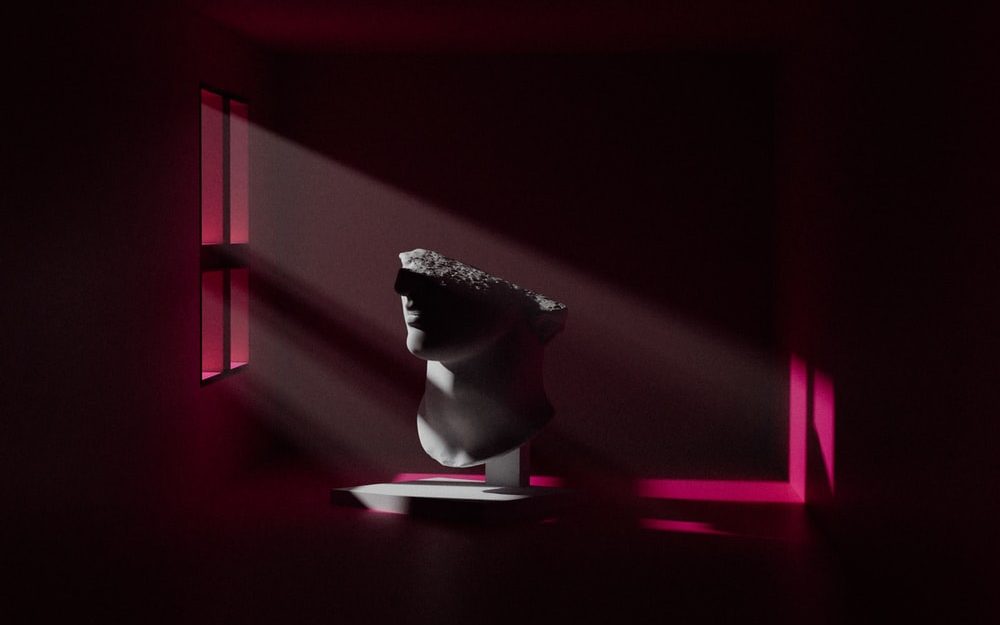It’s official: NFTs (non-fungible tokens) have been dubbed word of the year by the Collins Dictionary, its usage growing a staggering 1,100% in a turbulent year where eye-popping auction records and litigations came in equal measure.
From cryptokitties to quirky koalas, NFTs are often associated with jpegs, gifs, or meme art – much to the confusion of many practitioners in the ‘traditional’ art world no longer involved in the verification process of ‘but is it art?’
NFTs were introduced in the digital art world in order to pinpoint the value of the original when the work is often equally ‘ownable’ (ie. viewed, downloaded, shared) for anyone with internet access. Having an NFT makes the work scarce because it can now be associated with authenticity, originality, and hence, value.
Over the last nine months, speculation and interest continue to grow, with the NFT scene never lacking in drama since the first sparks took off in March.
Whether you are looking to gain a better understanding of the trends or need a refresher on what’s happened in NFT land so far, here is a recap to get you up to date.
MARCH – MAY: NFT MAKES THE HEADLINES
Do you remember the first time you heard the acronym NFT? To pin-point it in the art world, the US$69.3M auction of Beeple’s EVERYDAYS: The First 5000 Thousand Days at Christie’s is no doubt the mega-event that placed a chip in everyone’s minds.
Rewinding back to March 2021, the confusion and uproar that Beeple’s sale brought still warrants a closer look, which formed the basis of NFT’s development in the last nine months.
First and foremost, Beeple’s success isn’t unwarranted. From the fact that he made an artwork every single day for over a decade, to his career as a graphics designer commissioned by brands like Apple and Louis Vuitton, the Beeple phenomenon is as much brick and mortar as many other artists working with the physical medium, albeit inflated by the enthusiasm of crypto investors.
Singapore-based blockchain entrepreneur Vignesh Sundaresan (aka ‘Metakovan’) was the buyer of Beeple’s landmark work and Christie’s relished in the publicity of being the world’s first auction house to sell an entirely digital work.
Watch the artist explain this bizarre phenomenon himself:
What most people don’t see are Beeple’s own doubts around the inflation of NFTs,. He quickly cashed out the crypto for hard US dollars and later began delving into the realm of physical works – he even sent Metakovan a display screen and physical certificate for EVERYDAYS a few months later.
Yet, right off the bat, visitations and transactions on platforms like OpenSea (claimed to be the world’s largest NFT marketplace), SuperRare and Nifty Gateway ballooned.
Our National Visual Arts Editor Gina Fairley was quick to share some insights, looking at the pros and cons of NFTs as well as the Beeple aftermaths of an already cooling hype.
‘What is sure, is that thoughts are far from stable and that artists should be aware of the vulnerabilities and exposure NFTs pose to their artworks.’
Gina Fairley in ‘Are NFTs already on the nose?’
Perhaps in Australia – a smaller and less speculative market – there is still some hope that artists making digital works are actually going to reap the benefits of quicker turnarounds, building a fan base and NFT loyalty rights.
Without the traditional galleries or institutions as mediators, creators can connect directly with buyers or enthusiasts.
Artist Jess Johnson also pointed to greater inclusion during an interview for ArtsHub: ‘I don’t want to neg on the art world too much but it is rather an insular and rarefied space. It can be very exclusionary for a number of reasons so being able to reach wider audiences has always been more satisfying for me…’
However, organisations are quickly popping up in the world of NFTs, including dedicated galleries, exhibitions and foundations, creating a more recognisable, and soon centralised, infrastructure around the medium.
If you’re an artist who wants to hop on the NFT train, here is a detailed video on how to get started.
JUNE – SEPTEMBER: CRACKS IN THE ICE
As more artists delved into the experimental waters of NFTs, infrastructure was already starting to emerge in Australia by June.
Australia’s first NFT Gallery (the second in the world just after Superchief in New York) was established in Hobart to coincide with Dark Mofo 2021. In a multi-disciplinary venture, the Museum of Art & Philosophy (MAP) was set to showcase artists featured in print magazines New Philosopher and Womankind, curated by editor Antonia Case.
Artists Daniel Stricker and Vincent Hermann also hopped on the trend to make NFTs out of their VR immersive work on climate change at the 2021 Venice Architecture Biennale. All proceeds went to the village Poutasi, which is threatened by rising sea levels.
NFT and its price tag continue to go hand in hand while environmental concerns fuel the fire, but acts of philanthropy and fundraising deserve some social and cultural merit with some even going so far as to call NFTs the new frontier for charity.
This certainly seemed to be the case when an unexpected Australian institution made history in August. The Northern Centre for Contemporary Art accepted a generous donation of three carbon-neutral bitcoins to become the world’s first gallery to receive cryptocurrency as philanthropic funding.
The philanthropist Dr Prash Puspanathan told ArtsHub at the time: ‘We are seeing the art world embrace the crypto world with the emergence of NFTs, where digital art is selling strongly. It was only a matter of time before art philanthropy followed suit.’
On the other side of the spectrum, high-profile NFT litigations and scandals are keeping the bubble aloft.
From OpenSea’s insider trading scandal to a $1.5 million female empowerment NFT project that happened to be led by male Russian opportunists, NFTs seem to thrive on the ethos that bad press is good press.
Not only penetrating the visual arts, the music industry has also been using the technology to its advantage in the context of streaming – and has also experienced the peril.
The dispute between Jay-Z, Damon Dash and their record label Roc-A-Fella is a classic example of misunderstanding NFT ownership and copyright.
The takeaway? Make sure to know your NFT rights to avoid misunderstandings of ownership with prospect buyers.
‘Particularly as the prominence of NFTs are increasing, people might not necessarily understand that there are still intellectual property issues subject to things like the Copyright Act [in a digital marketplace].’
Marque Lawyers Senior Associate Emma Johnsen
The lack of regulation makes it easy for NFTs to be minted without permission from the original artist or owner. While such incidents were already occurring in the emerging NFT scene, they have become especially prevalent as a quick money grab, with anything from stealing a dead artist’s work to automated tweet-minting bots underway.
Popular digital art platform DeviantArt sought to address the concern with an art theft-detecting AI, but once alerted, artists will still have to do the work of reporting theft on individual NFT sites.
OCTOBER TILL NOW: A RETURN TO ‘NORMAL’?
A winner-for-all ideal that was hoped would be advanced by NFTs is quickly slipping down the slope to winner-takes-all.
An ArtTactic report in November 2021 revealed that women account for just 16% of the NFT art market, while around 16-32 artists dominate more than half of its sales – keep in mind this disparity occurred within the span of a few months.
Further, and not dissimilar to the traditional art market that some crypto enthusiastic are claiming to dismantle, the value and inflation of these works is determined by almighty organisations – in this case auction houses. Shortly after Beeple at Christie’s, auction houses such as Sotheby’s and Phillips quickly elevated the likes of Pak and Mad Dog Jones to blue-chip status.
While no doubt there are artists who make great work and can better finance their practice by selling them as NFTs, taste-making decisions continue to be held in the hands of the few.
The commercial art world has digested NFTs well enough, with their appearance quickly becoming the talk of art fairs and even platforms now dedicated to the medium, such as the Digital Art Fair Asia 2021 launched in Hong Kong.
What would it mean if NFTs become just another cog in the wheel, when there hasn’t even been enough time to delve into their true potential?
On the other hand, while some are still hung up on the concept of digital art for millions, others shout out: ‘Forget NFTs, here comes the metaverse!’
Indeed, Metaverse just happens be the name of Sotheby’s newly established NFT-only marketplace.
Drawing on the wisdom of the gaming world, our Games Writer Leah J Williams shared why the metaverse is not an innovative utopia and its hidden disparities are worse than they seem.
‘Even as companies like Facebook and Unity pour resources into developing new virtual worlds to play in and connect with, they fail to understand that metaverses have had their time in the sun, and didn’t survive the burn.’
Leah J Williams in ‘The metaverse is not new, and it won’t change the world’
If you are still making up your mind around NFTs, upcoming (yes #irl) NFT events slated for Australia in 2022 may help open your eyes or fulfil your curiosity.
Australia’s biggest NFT event SIDUS will land in Melbourne 2022, hosted by NFT STARS and featuring conferences, programming and an exhibition where visitors can learn to mint their own token. More details to be announced in 2022.
For reference, a similar series of physical conferences titled NFT.NYC was held in November and national art critic Ben Davis at Artnet joined the craze to find out what it’s really all about.
In what was advertised as Australia’s first gallery-led NFT exhibition, SATELLITE will be hosted at Twenty Twenty Six Gallery in Bondi Beach from 9 March – 3 April 2022. The month-long, digitally immersive program is said to showcase more than 40 NFTs alongside panel talks and networking events. The show made sure to include the hottest names in NFT, including Beeple and Trevor Jones alongside local Australian pioneers including artist and musician Serwah Attafuah.
Attafuah, who is also participating in the ASUS Creator Xchange, has high hopes for the development of the NTF terrain. ‘I think the future is bright for NFT’s,’ she told ArtsHub.
‘It not only gives artists control over distribution and selling of their artwork, but gives us a whole new medium in which to experiment. I hope to see more artists of all different disciplines immerse themselves in the metaverse.’
Despite a slight downhill trend, it’s too soon to judge if NFTs are a flop or if their true capacity is yet to be realised. At the end of the day, whether you are an artist, curator, collector or gallery owner, it would be wise to keep an eye on this emerging digital space.





